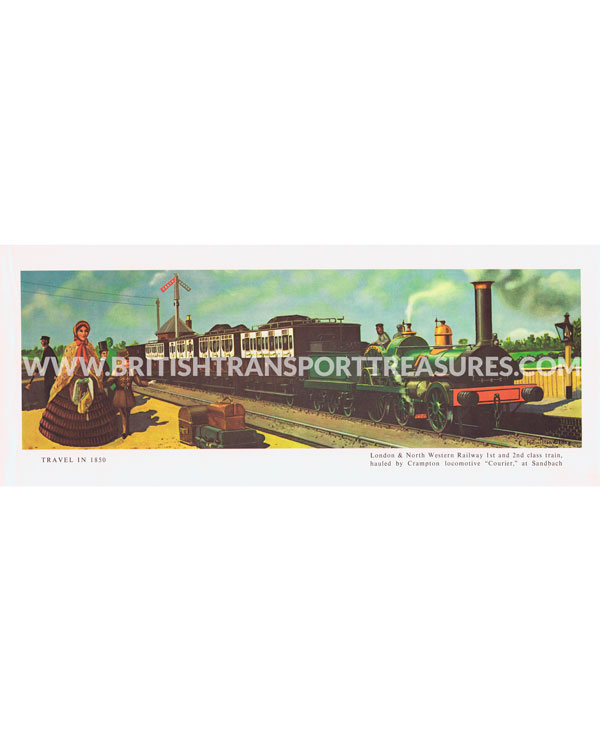Description
In the days when the majority of railway carriages were of the separate compartment type, rather than the open saloons of today, the only alternative to looking out of the window to making unwelcome eye contact with the strangers opposite, was to stare at the luggage rack. A number of railways adopted the scheme of displaying two or three sepia photographs of places served by the line in the space between the opposing passenger’s heads, and the luggage rack. These were of the “Promenade at Cleethorpes” variety, and were still in situ in elderly carriages, long after the straw boaters and long dresses of the figures depicted had ceased to be fashionable. Between the Wars, attractive water-colours of villages, landscapes and historic buildings were commissioned from well-known artists for use in new rolling stock.
However, apart from the occasional viaduct, few were of direct railway interest. Around 1950, George Dow, P.R& P.O of the London Midland Region, and already a noted railway historian, decided to brighten up travel in bleak austerity Britain, by commissioning railway author and artist Cuthbert Hamilton Ellis (1909-1987) to produce 24 oil paintings on the theme of “Travel in…” featuring colourful trains and ships which had belonged to companies swallowed up in the former London Midland & Scottish Railway in 1923. This, featuring a scene in 1850, was No.4 in the set with dates ranging from 1835, to 1920. Until the Great Exhibition of1851, when third class excursionists travelled to London in their tens of thousands, the railway companies greatly underestimated the demand for this class of travel. As illustrated here, the vast majority of trains consisted of 1st and 2nd class carriages only. On most lines, apart from the statutory “Parliamentary” train each way, there might only be one or two more conveying 3rd class ticket holders, and they were often at inconvenient times of day or night. During the 1860s the passenger duty payable on 3rd class fares began to be eased, and the railways found themselves with a vast untapped source of revenue. In the following decade the Midland Railway led the way by abolishing second class and upgrading third. Other companies had to follow suit and soon, third class passengers were admitted to nearly all trains.
The locomotive “Courier” a patent design by Thomas Russell Crampton, intended to produce high speeds with a low centre of gravity. She was built at Crewe works, then in the charge of Alexander Allan, in 1847. The driving wheels were 7ft. in diameter, and should have given the loco a fair turn of speed, but a badly designed boiler starved her of steam. The Crampton type enjoyed a short vogue in Britain during the 1840s – 1850s notably on the South Eastern Railway, but fell out of favour as train weights increased. On the continent, however, particularly in France, they became very common, so much so that into the early 1920s, long after the last had been scrapped “Prenez le Crampton” was synonymous with “Take the train”.

Reviews
There are no reviews yet.